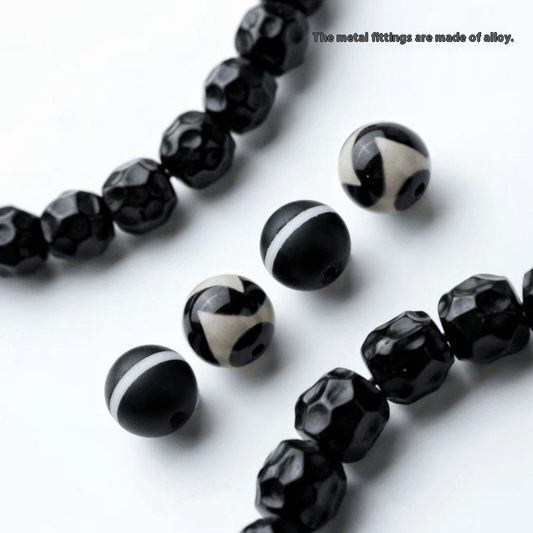
Amid the sophisticated tapestry among Tibetan sacred practices rest two powerful symbols: the elaborated thangka and crafted bodhi seed. All individually, in distinct form, function to connect with higher wisdom. The thangka, a colorful canvas, shows holy beings, mystical shapes, or doctrinal episodes, providing insight for inner reflection.
Yet, the bodhi bead, often crafted from semiprecious minerals, wooden material, berries, or bone, is a tangible reminder of Buddha's enlightenment under the bodhi tree. Employing the beads assists in mental stillness.
- Mutually, the thangka and the bodhi bead symbolize the connection of beauty and piety. They offer a tangible link to the timeless doctrines of Tibetan Buddhism.
Legends Echoed from Camel Remains
Across the sands of time, ages-old treasures whisper tales pertaining to a world long elapsed. These are not sparkling objects in disregarded empires, but elementary camel bones sculpted with symbols that unlock the unknowns of a bygone age. All elements preserve the echo of a life lived, a journey made, and a connection to the ancient wisdom which enfolds us all.
- Such objects
- Relics
- Are
Exploring the Mystical World of Thangka Art
Tangkas are luminous paintings on canvas, meticulously crafted by Tibetan artists to depict exalted figures and scenes from Buddhist philosophy. Each detail within a thangka is laden with depth, forming a complex tapestry of visual narratives that guide the viewer on a spiritual journey. The colors used in thangkas are not merely aesthetic choices but carry profound connotations, representing different aspects of the Buddhist doctrine. From the austere figures to the intricate patterns, thangkas offer a peek into the rich world of Tibetan Buddhism, inviting us to deliberate upon its understanding.
- Classic thangka art often depicts key Buddhist figures such as Buddha Shakyamuni, Bodhisattvas like Avalokiteshvara and Manjushri, and enlightened beings from various factions of Tibetan Buddhism.
- Within these representations lies a wealth of discernment that can be accessed by those who contemplate the symbolic language of thangkas.
Tathagata's Path to Enlightenment: Embodied in Beads and Bone
Upon the winding road to awakening, the Buddha adopted insignia imbued with profound importance. Separate bead and piece held within them the heart of his teachings, exhibiting glimpses into the matrix of reality. By way of their appearance, the Buddha expressed profound realizations that elude the realm of physical perception.
From these meditation beads, crafted from rare materials, dispersed vibrations that matched with the refined frequencies within. The remains of a existence, meticulously transformed into relics, served as tangible signals of the impermanence essential to all realities.
Thangkas: Windows into Himalayan Spirituality
Thangkas vivid paintings on cloth serve as strong representations of Himalayan spirituality. These intricate works of art, meticulously created with precise brushstrokes, depict a vast array featuring Buddhist deities, mandalas, and scenes from esteemed scriptures. Each thangka is a contemplative aid for meditation and contemplation, offering awareness into the multifaceted teachings of Buddhism.
- They are often used in ritual ceremonies during
- inducing states of spiritual illumination.
- Thangkas serve as not merely decorative pieces but rather windows into the rich and mesmerizing world of Himalayan spiritual traditions.
Discover the Depth of Bodhi Beads: A Path to Mindfulness and Compassion
Each pellet on a bodhi bead mala whispers tales of ancient wisdom, guiding us on a path through the tranquil waters of mindfulness. As we seize these intricately manufactured beads, our fingers trace the contours of every one, anchoring our alertness in the present moment. The gentle weight of the beads against our palms serves as a tangible reminder to exhale, fostering a sense of stillness.
- At every bead that passes between our fingers, we nurture compassion, extending it first to ourselves and then outward to the world.
- Oriental wisdom teaches us that mindfulness is a method that requires patience and dedication.
By means of the rhythmic repetition of mantra or simply the mindful observation of the beads, we detach from the relentless chatter of the mind.
The practice employing bodhi beads is a elegant invitation to rekindle our connection with ourselves and the world around us.
Manifesting Intent: Building Camel Bone Bracelets for Sacred Development
Focus represents a compelling drive in our lives, shaping our experiences and guiding us towards our intended direction. When we combine this intention with the ancient wisdom of crafting a camel bone bracelet, we create a potent synergy that can propel our spiritual growth.Camel bone remains deeply resonant, representing strength. Its natural beauty and perennial fascination serve as a constant reminder of the core vitality within each of us.As we carefully select each bone, infuse our intentions into the bracelet. With every knot or fastening, we entwine our hopes, dreams, and aspirations for spiritual evolution. This act of creation becomes a sacred ritual, blending us with our inner wisdom and guiding us on a road to insight.- Draw inspiration from the bone’s inherent patterns.
- Channel your willpower throughout the weaving process.
- Expose it to elements to empower its sacred presence.
The Fascinating Story of Camel Bone in Buddhism
In the rich tapestry inside Buddhist tradition, artifacts often hold profound symbolic meaning. Amidst these varied objects, camel bone stands out as a unique and intriguing element. Throughout history, this material has been used in the crafting across various Buddhist accessories, each imbued with specific symbolisms.
- Viewed as a symbol of resilience and strength due to the camel's ability to endure in harsh environments, camel bone often exemplifies spiritual fortitude.
- Besides, the color and texture against camel bone are believed with some to hold auspicious connotations, representing purity and serenity.
Thus, camel bone has become a valuable part of Buddhist tradition, serving as a tangible bridge to the profound teachings contained in this ancient faith.
Thangka Compositions: Acts of Holiness
Within the ethereal realm of Tibetan Buddhism, Thangka paintings emerge as sacred portals to enlightenment. These captivating works, meticulously crafted by skilled artists known as thangkapa, depict a myriad of vibrant deities, celestial beings, and mythical creatures. Each brushstroke injects profound spiritual significance, narrating ancient tales and philosophical dogmas.
- Including a vast repertoire of Buddhist iconography, Thangkas serve as both devotional objects and instructional tools. Devout practitioners gaze upon these paintings during rituals and meditations, seeking to acquire spiritual wisdom.
- Intricately adorned with intricate details through a plethora of vibrant hues, Thangkas are considered windows into the divine. The painting acts as a symbolic representation of the Spiritual Leader's teachings and the path to liberation.
By way of their powerful imagery and symbolism, Thangka paintings offer a glimpse into the rich sacred traditions of Tibet. They are a testament to the enduring mastery of Tibetan art and its profound ability to invigorate.
Embracing the Duality: Thangkas and the Cycle of Life and Death
Thangkas, lively crafted Tibetan hangings, communicate a serious study of existence’s temporality. Each intricate illustration depicts deities and beings engaged in the progressive venture of life and death, a panorama of birth, growth, impermanence, and resurgence. The artists skillfully interlace these concepts within the thangka's realm, highlighting the correlation of all things. Through vivid symbols, they invite us to ponder on our own life. The cycle recurs, a dance of coming and going, highlighting the preciousness of Fengshui each moment. By embracing this duality, thangkas teach us to welcome the beauty in both life's joys and sorrows.Loops of Belief: The Significance of Bracelets in Buddhist Practice
In the intricate tapestry of Buddhist practice, seemingly simple objects often hold profound meaning. Among these are bracelets, which serve as tangible tokens of devotion and commitment to the way of Buddha. Worn on the wrist, a bracelet operates as a constant reminder of one's aspirations and desires. It can indicate the impermanence of life, urging practitioners to remain rooted in the present moment. Some bracelets may hold sacred symbols, such as mantras or the names of Buddhas, which are considered to draw in positive energy and defense. Others frequently are made from matter with spiritual significance, like sandalwood or lotus seeds, adding the bracelet's power. Ultimately, the significance of a Buddhist bracelet lies far beyond its physical form. It becomes a powerful tool for meditation, a stimulus to live in harmony with the teachings of Buddha, and a embodiment of one's unwavering loyalty.